I’m taking a break from the Owl, because I wanted to go back to the first head, but the third one with bigger eyes got some attention on Twitter, and I figure the folks on Twitter know what they like. So I need to think. In the mean time I’m excited about stretchy, lace happy edges that can be used for easy motif joining.
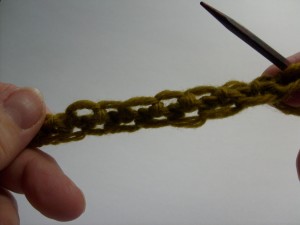
It starts with Mary Thomas’s picot Cast-On. This is not the modern Picot Cast-on, but the one that String Geekery calls an eyelet border. It forms a braid with loops on either side of it. When you are done knitting the braid, you pick up the loops on your needle, and knit into them. This leaves the same number of loops on the other side either for decoration or to pick-up and work in the other direction.
To make the cast-on, first get two stitches on your needle in whatever method you use. I usually make the first one by bending the yarn around my needle, then using the tail as my provisional anchor, bring up a stitch from behind the tail.
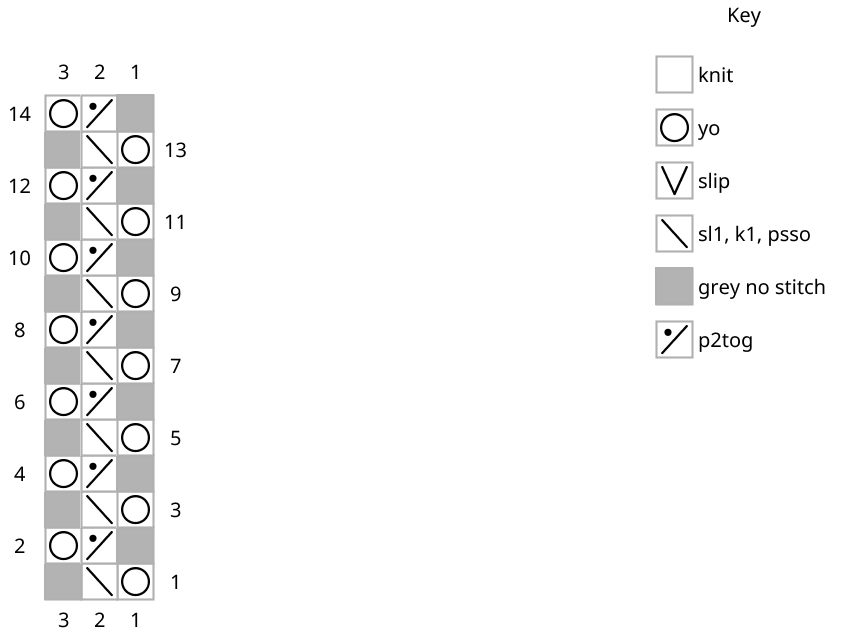
Row 1: Yo, sl1 purl-wise, k1, psso. Turn.
Repeat row 1 until you have enough loops for your project.
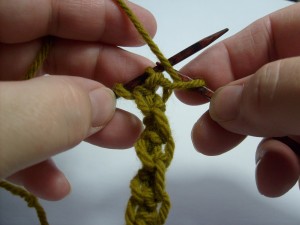
Slip your working needle into those loops and knit into them as with any other cast on. For some folks, making a yo as the first action just feels wrong. Basically, start with the yarn in back, then bring it over the needle to the front. Since the next stitch is a sl1 purlwise, leave the yarn in the front.
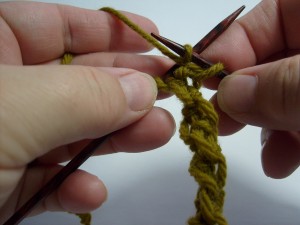
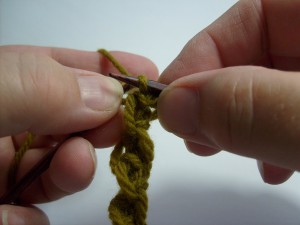
It may take a while for your fingers to feel happy. They may think you are doing brioche. And that starting yo may want to slide over the slipped stitch since it isn’t really anchored to anything but the last knitted stitch. You may need to hang onto it with your right hand to make it behave.
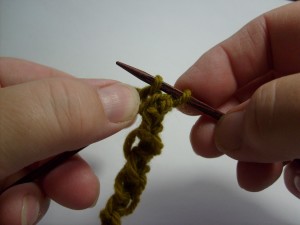
All of the left leaning decreases work, but each will give you a different looking braid. I really like the original sl1 purl-wise, k1, psso Mary Thomas used, because the inner braid looks complex and makes the eyelet stand up proud.
You will have the same number of loops on the other side, which you can pick up and knit the other way, or leave looking pretty on the end of your project. You do need to uncoil it, it behaves like an old fashioned telephone cord. It’s stretchy, and a lace fabric won’t be compressed.
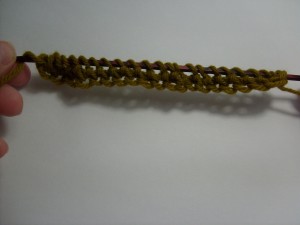
If you begin provisionally, you can put the first two stitches back onto your needle, and leave the last two stitches on your needle, so your cast on forms a mini curved shirt-tail shape.
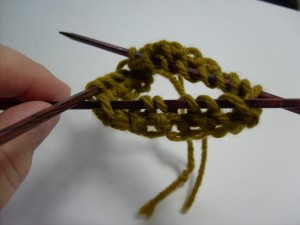
If you start with a provisional cast on, you can graft the starting end to the ending end, and begin circularly.
There are four more posts to come on this
- Mary Thomas’ Picot Cast-on
- My nearly matching Bind off
- Barbara Abbey showed how to use the eyelets to join up motifs as if they were hairpin crochet; I’ll show how with both a crochet hook and knitting needles.
- And how to work her selvage
I’ll probably slip the next owl in the middle of this series.
